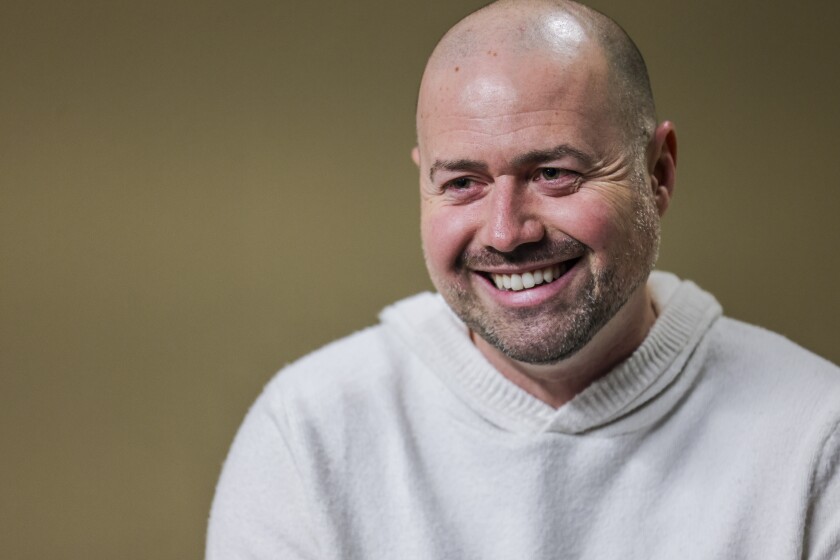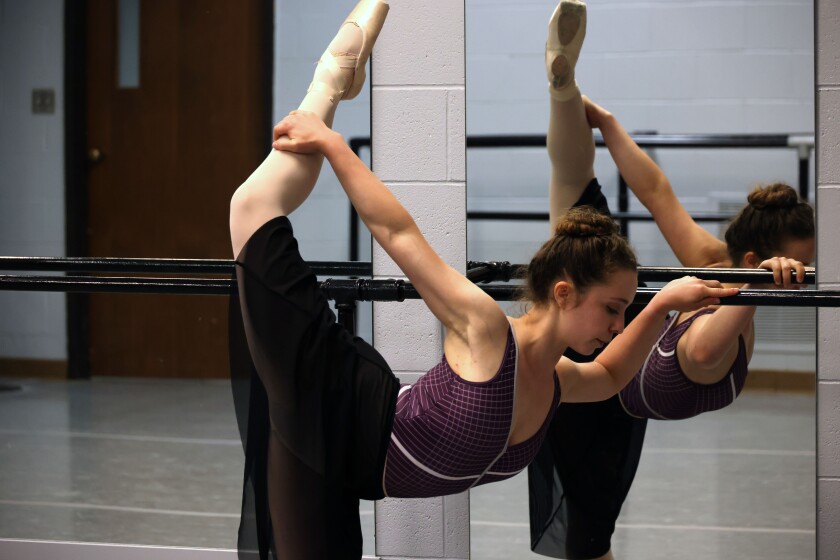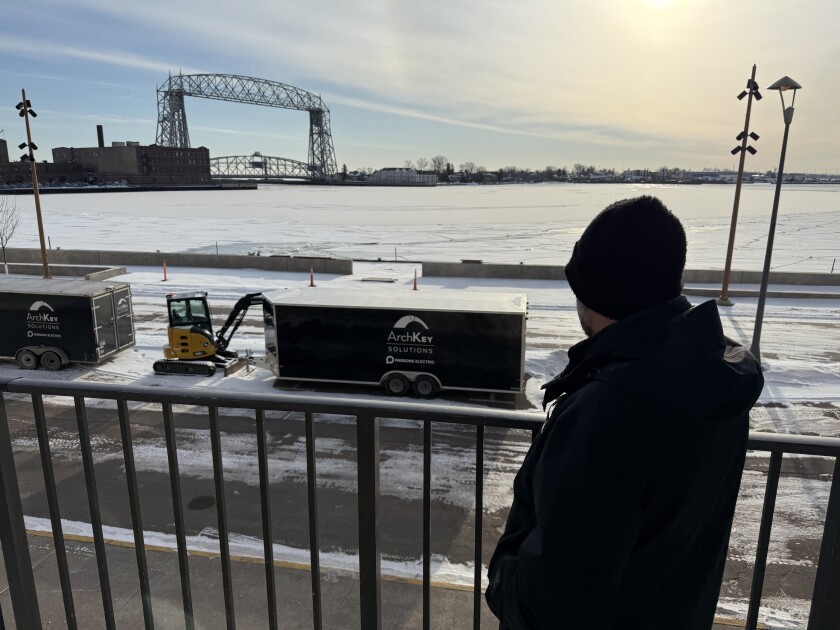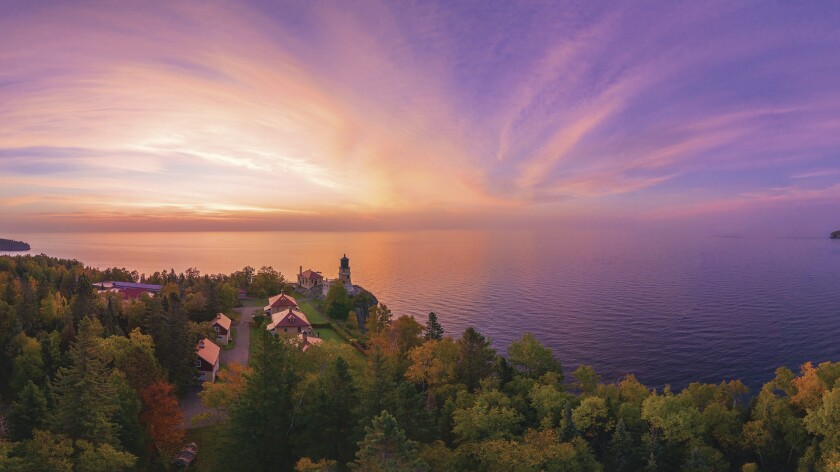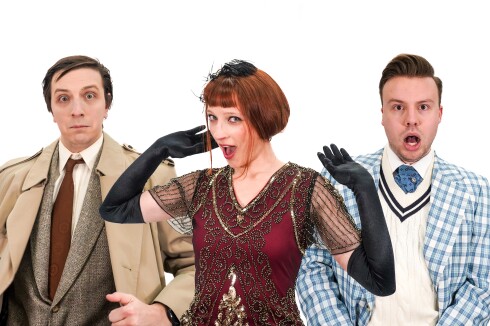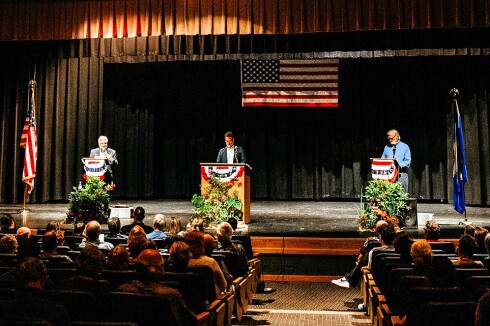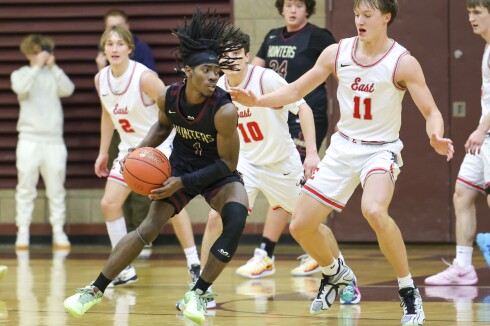FARGO — Do you love Fargo music history? Have you always wanted to own a Grammy Award? Do you have more than $22,000 to make your dreams come true?
Duke Ellington’s 1980 Grammy for the album, “Duke Ellington At Fargo, 1940 Live,” hits the auction block Tuesday, Feb. 27, through the international auction company Bonhams.
ADVERTISEMENT
Bidding starts at $22,000 with an additional 28% buyer’s premium on the winning bid. The auction house estimates the item's value between $25,000 and $30,000.
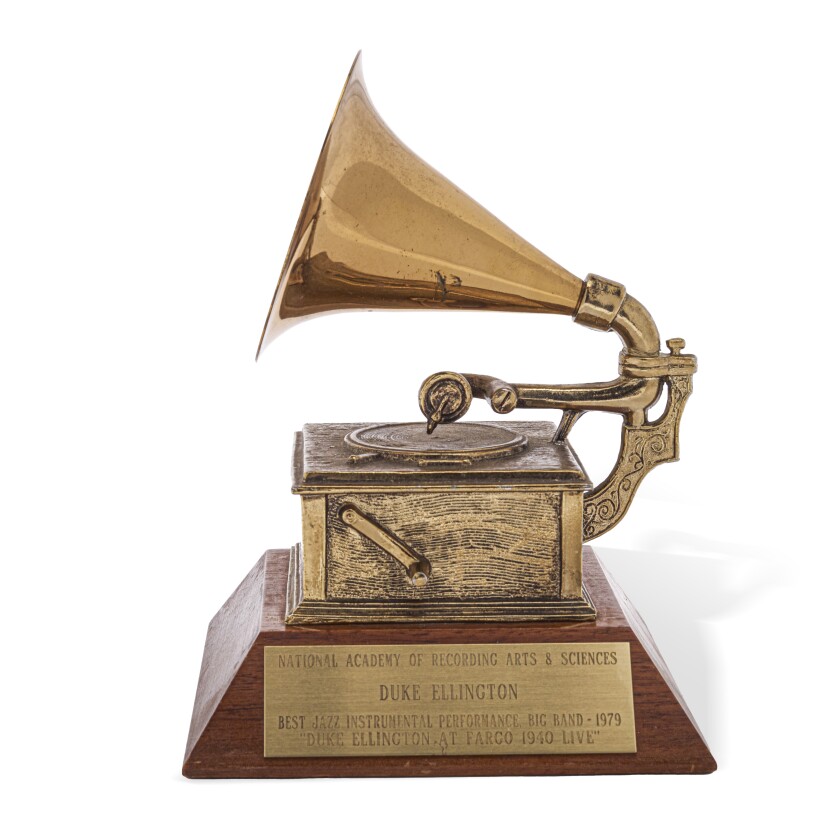
“Ellington won 13 Grammys, and they all went to museums and institutions. This is the first one to come to market,” Isabela Kimmel, an administrator for Bonhams Popular Culture department in Los Angeles, told The Forum.
Kimmel said the company won’t reveal who is selling the award but indicated there’s provenance to show it was given to a close friend of the family by Ellington’s sister and manager, Ruth.
One historic night
Pianist Duke Ellington’s Nov. 7, 1940, concert in Fargo’s Crystal Ballroom is not just a legend locally but internationally in jazz circles thanks to a unique recording by two 20-something friends, Jack Towers and Richard Burris.
Burris worked at the radio station at North Dakota State University Extension Service, and Towers was his counterpart at South Dakota State University. The two were approved to record the concert by Ellington’s management and the Crystal Ballroom's owner, Ralph E. "Doc" Chinn. Still, when they talked to the bandleader before the show, he didn’t understand why they’d want to record that night.
"Duke said, 'Gee, I don't see why you'd want to do that. Our trumpets are in really bad shape,'" Towers told National Public Radio in 1980.
Trumpeter Cootie Williams had just left the group after 11 years to play with Benny Goodman. At first, the sound engineers were disappointed, but Williams' replacement, Ray Nance, made his debut with Ellington that night and would stay with the band for the next 23 years.
ADVERTISEMENT
Other musicians that night included Ellington stalwarts: alto saxophonist Johnny Hodges, tenor saxophonist Ben Webster, Harry Carney on baritone sax, bassist Jimmy Blanton and drummer Tricky Sam Nanton.
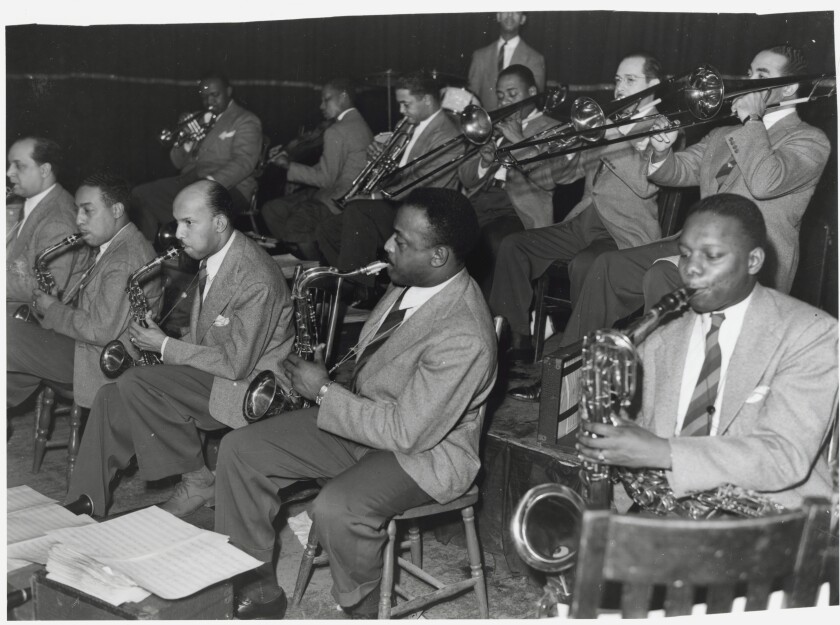
"When you listen to the recordings, you can tell the trumpets aren't up to scratch, but they're pretty good," Towers said in the 1980 NPR interview.
The weather that day was wet and snowy, which made driving difficult, but that didn’t keep a crowd of about 700 from paying $1.30 for the ticket and showing up for the dance. The weather also meant the musicians had to carry their instruments five blocks south from the Great Northern Depot (where Great Northern Bicycle Co. is now).
Towers and Burris lugged their gear up to the second-floor ballroom, above the Fargo City Auditorium. They had three microphones and only 30 feet of cable, so they had to set up the recording turntable by Ellington's piano.
They used a portable turntable to record directly onto a 33 1/3-rpm acetate-covered aluminum disc measuring 16 inches in diameter. About 15 minutes of music could be recorded per side of the disc, so the two would sometimes have to exchange discs mid-song.
A musical document
Their effort proved to be worth it. They captured more than 40 songs and nearly three hours of music. The setlist included the group's premiere of "Star Dust" as well as standards like "Caravan" and "Sepia Panorama" — the outfit's theme song until "Take the 'A' Train" came along two months later.
“We weren't really used to recording music. We were used to recording voices, speeches, interviews," Towers told NPR. "When the band hit, we adjusted our levels and hoped for the best."
ADVERTISEMENT
They played the recordings back to the musicians after breaks and won their approval. They gave the musicians pressings of the recording and vowed never to release it. Still, they made copies available to the musicians and Webster — the group's tenor sax player — would occasionally write Towers to get more copies over the years.
With time, the show became talked about in jazz circles and bootleg recordings started appearing in Sweden in the late 1960s. The Fargo Public Library acquired copies in 1976, and one copy remains in the library's North Dakota collection but does not circulate.

Ellington died in 1974, and a few years later his family decided to officially release "Duke Ellington at Fargo, 1940, Live." In 1980, the album won the Grammy Award for Best Jazz Instrumental Performance, Big Band.
"I couldn't believe it. I couldn't see this 40-year-old recording competing with the top bands in the land right now," Towers told NPR shortly after the win.
Burris died in 1971, so he never got to see the recording officially released and celebrated.
Ellington fans and scholars hold the recording as a vital testament to an incredible band at a pivotal time. Stanley Dance, Ellington's friend and scholar (he delivered the eulogy at the bandleader's funeral) once noted the record “captured an evening when the orchestra was hitting all the notes; there are few live recordings (of Ellington) any better than this."
When Towers died in 2010, Dan Morgenstern, director of the Institute of Jazz Studies at Rutgers University, wrote an obituary in The New York Times calling the recording "a milestone in the Ellington recorded literature."
ADVERTISEMENT
The original acetate discs are now part of the Smithsonian Institution.
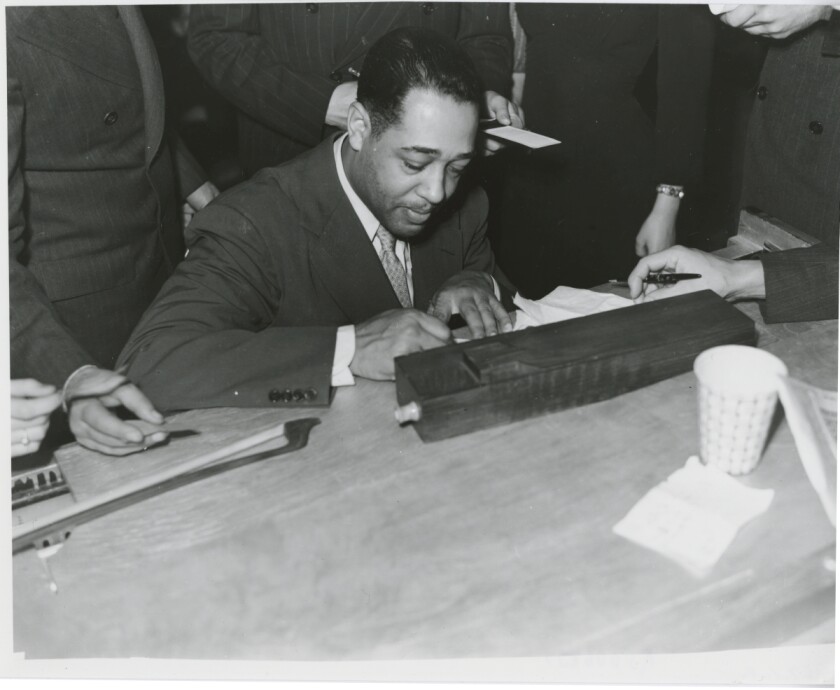
"We weren't thinking of anything beyond getting something we'd have a good time with, something to play for our own amazement and enjoyment," Towers told the Washington City Paper in 2001. "But I'll always remember that when we were driving home, ol' Dick said, 'Boy, we probably don't even realize what we've got here.'"
Tuesday won’t be the first time an Ellington item will be auctioned off, but if it earns at least the asking price, it will be the priciest in recent years. In 2016 an arrangement by Billy Strayhorn of Ellington’s 1930 composition, “Mood Indigo,” sold for $14,000.
Also in 2016, a Pulitzer Prize for “Special Citation” was awarded posthumously to Ellington for his contributions to art and culture, sold for $7,000, both according to the website liveauctioneers.com.
The highest hammer price for a Grammy Award was given to Johnny Cash, Carl Perkins, Jerry Lee Lewis, Roy Orbison, Sam Phillips, Rick Nelson and Chips Moman, according to Live Auctioneers. The award was for Best Spoken Word or Nonmusical Recording for “Interviews from the Class of '55 Recording Session.” In 2004, the 1986 trophy was auctioned off for $187,200.








